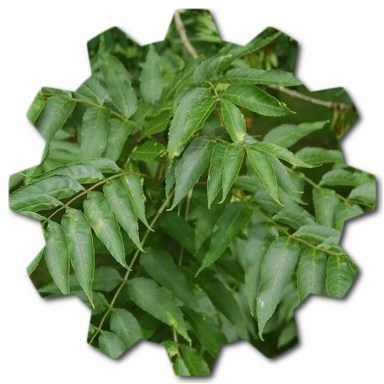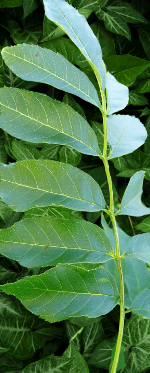Acer negundo, commonly known as boxelder, boxelder maple, or Manitoba maple, is a deciduous tree or large shrub native to North America. Here’s some detailed information about this tree:
1. Description:
- Leaves: The leaves of Acer negundo are pinnately compound, typically composed of three to seven leaflets. Each leaflet is lance-shaped and serrated along the edges. The leaves are usually bright green, turning yellow in the fall before dropping.
- Bark: Young boxelder trees have relatively smooth, greenish bark that gradually transitions to a grayish-brown as the tree matures. With age, the bark can become furrowed and rough.
- Size: Boxelder is a fast-growing tree, and it can reach a height of 30 to 50 feet (9 to 15 meters) with a similar spread. In some cases, it may take on a shrub-like appearance when grown as a multi-stemmed plant.
2. Flowers and Fruits:
- Flowers: In the spring, boxelder produces small, inconspicuous flowers that are typically yellow-green. These flowers are borne in clusters.
- Fruits: The fruit of Acer negundo is a paired samara, commonly referred to as “helicopter seeds” due to their winged structure. These seeds are typically light green when young and mature to a brown color. They are dispersed by the wind.
3. Habitat and Distribution:
- Boxelder is adaptable and can be found in a variety of habitats, including riverbanks, floodplains, and disturbed areas. It is native to North America and can be found in various regions of the United States and Canada.
4. Tolerance and Adaptability:
- Acer negundo is known for its tolerance to a wide range of growing conditions. It can grow in poor soil, is relatively pollution-tolerant, and can withstand periods of drought. These characteristics make it a hardy tree.
5. Fall Color:
- While the fall foliage of boxelder is not as vibrant as that of some other maples, it does turn yellow or yellow-green in the autumn before leaves drop.
6. Invasive Potential:
- Boxelder can sometimes be considered invasive in certain regions due to its ability to self-seed prolifically and spread rapidly, especially in disturbed areas. It can become weedy and crowd out other native vegetation.
7. Uses:
- Boxelder has limited practical and ornamental uses. It may be planted as a fast-growing shade tree in some cases, used for erosion control, or serve as a source of firewood and timber. It can also be used in ecological restoration projects as a pioneer species to stabilize soil in disturbed areas.

It’s important to note that Acer negundo is not typically chosen for ornamental landscaping because of its rapid growth, relatively unremarkable appearance, and its tendency to self-seed abundantly, which can lead to weedy growth. In many landscaping contexts, other maple species are preferred for their more attractive features and growth habits.
Is Acer negundo toxic?
The seeds and foliage of Acer negundo (boxelder) contain a substance called hypoglycin A, which can be toxic if ingested. While the tree is not considered highly toxic, there are some concerns associated with it:
- Hypoglycin A: The primary toxic component in Acer negundo is hypoglycin A. This substance can cause muscle damage, leading to symptoms like muscle weakness, trembling, and difficulty standing or walking when consumed in sufficient quantities.
- Livestock Concerns: Boxelder is generally considered unpalatable to most livestock, but in situations of feed scarcity or if consumed in large quantities, it can potentially lead to poisoning in animals. This is more of a concern in agricultural contexts where livestock may have access to boxelder leaves or seeds.
- Ingestion in Humans: While there are documented cases of children and adults experiencing mild toxicity from ingesting boxelder seeds or leaves, it’s relatively rare. Symptoms can include stomach upset, vomiting, diarrhea, and muscle weakness.
- Prevention: To avoid potential toxicity, it’s advisable to discourage the consumption of boxelder seeds or leaves. This is especially important when dealing with livestock, children, or pets that might have access to the tree.
In summary, while Acer negundo is not typically considered highly toxic to humans or animals, it does contain substances that can be harmful if ingested in sufficient quantities. As a precaution, it’s best to avoid consumption of the seeds and leaves, particularly for livestock or pets. If you suspect that someone, including a pet, has ingested parts of the boxelder tree and is showing signs of illness, it’s advisable to seek medical or veterinary attention.
Where does Acer negundo grow?
Acer negundo, commonly known as boxelder, is native to North America and can be found growing in various regions throughout the United States and Canada. It is a versatile tree with a wide range of growing conditions. Here’s where you can typically find Acer negundo:

Eastern North America: Boxelder is native to parts of eastern North America, including the eastern United States and eastern Canada. It can be found in regions from the Atlantic Coast to the Great Lakes and as far south as Florida.
Central North America: This tree is also native to central North America, including areas of the Great Plains, the Mississippi River basin, and the central Canadian provinces.
Western North America: While not as common in the western parts of North America, boxelder can still be found in some regions of the western United States and western Canada. It may grow along watercourses, in lowland areas, and other suitable habitats.
Disturbed Areas: Acer negundo is known for its ability to colonize disturbed areas, making it a common sight along riverbanks, floodplains, and in urban and suburban environments.
Various Habitats: It is adaptable to a variety of habitats, from wetlands and riparian zones to upland areas, and can tolerate a range of soil types and growing conditions.
Invasive Potential: In some regions, Acer negundo can become invasive, particularly in areas that have been disturbed or where it outcompetes native vegetation. Its ability to self-seed and grow rapidly can lead to concerns in certain ecosystems.
It’s important to note that while boxelder is native to various regions of North America and is adaptable to a range of environments, it is not typically chosen for ornamental landscaping because of its rapid growth and relatively unremarkable appearance. In many landscaping contexts, other maple species are preferred for their more attractive features and growth habits.
